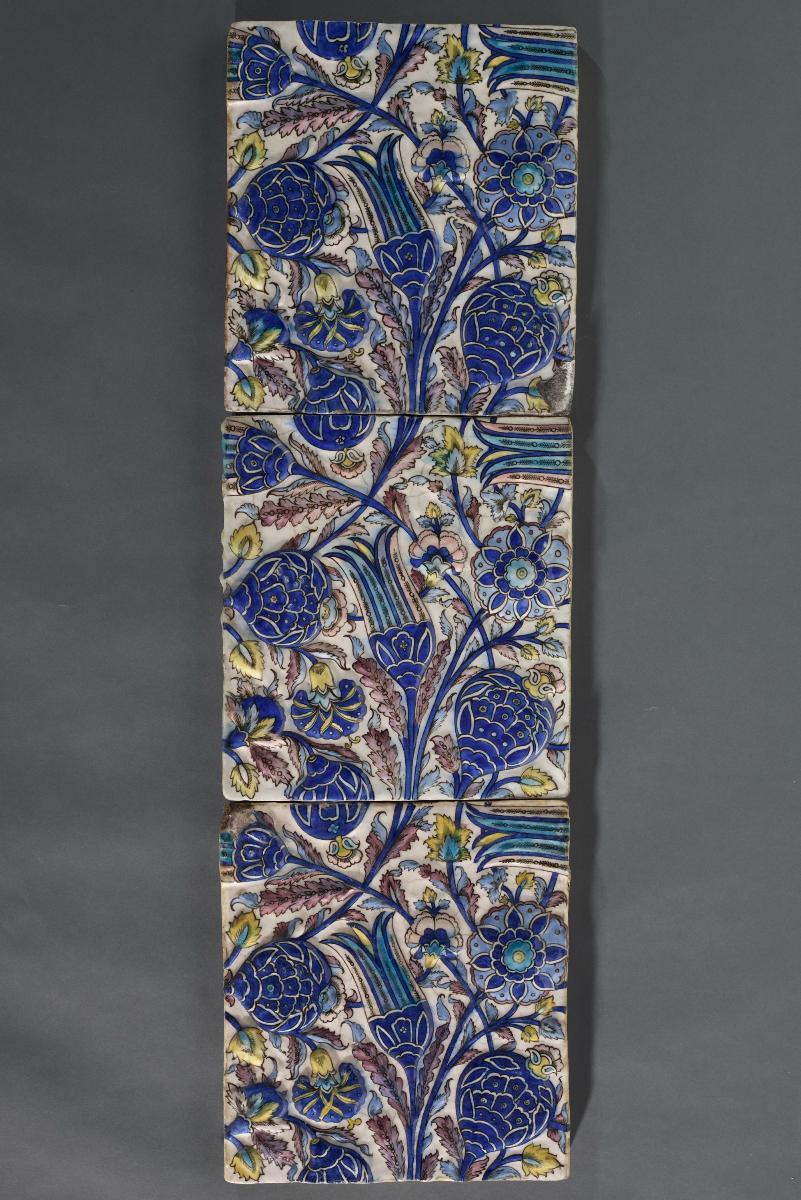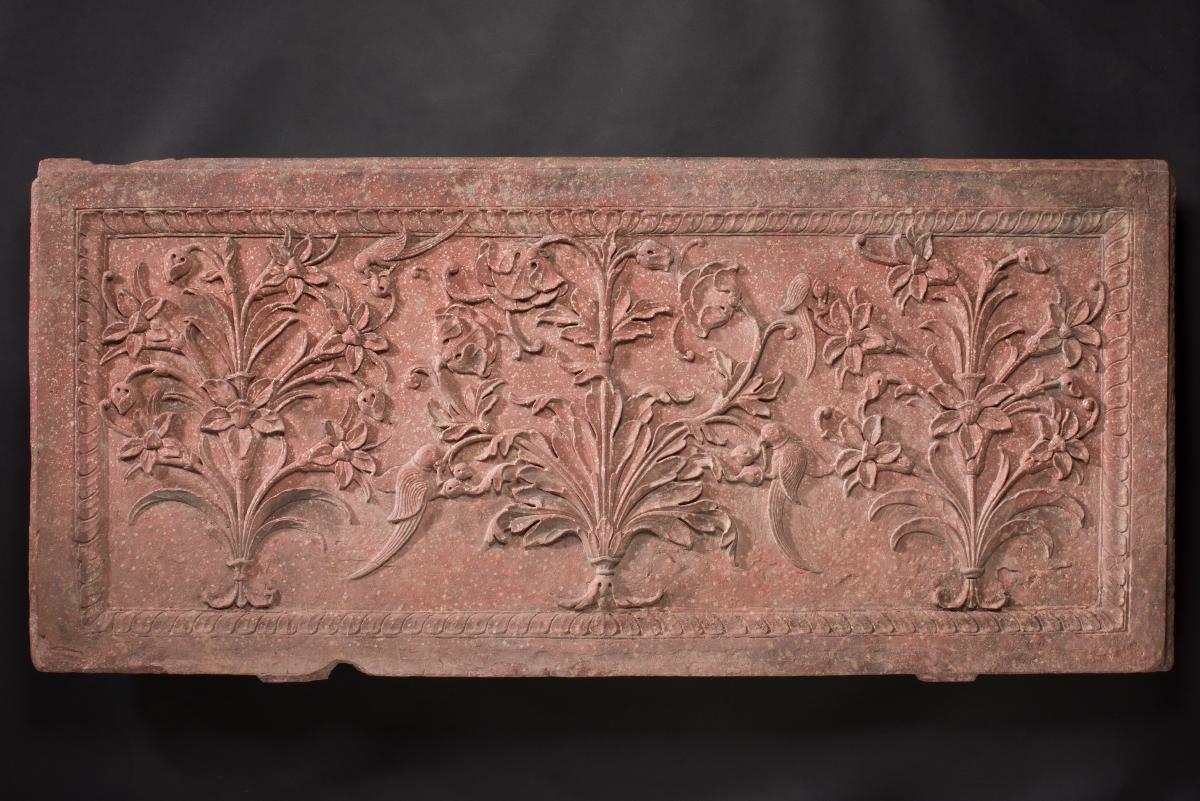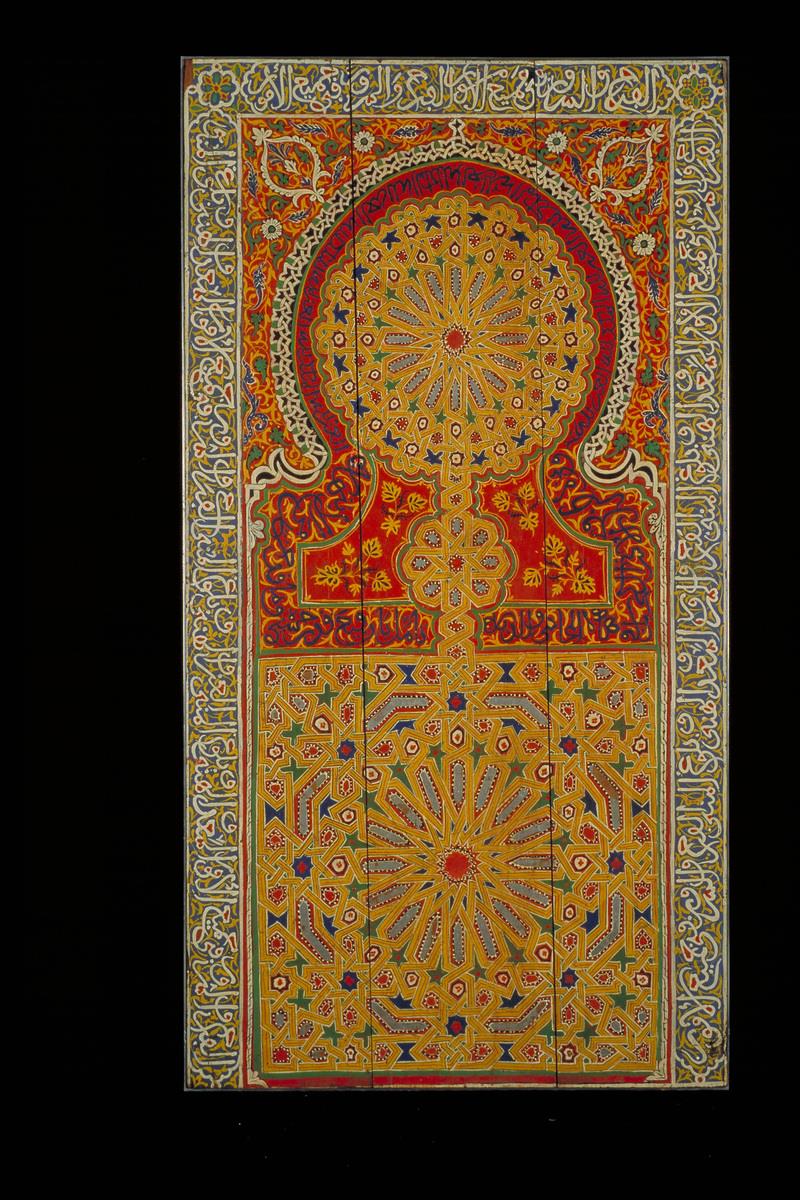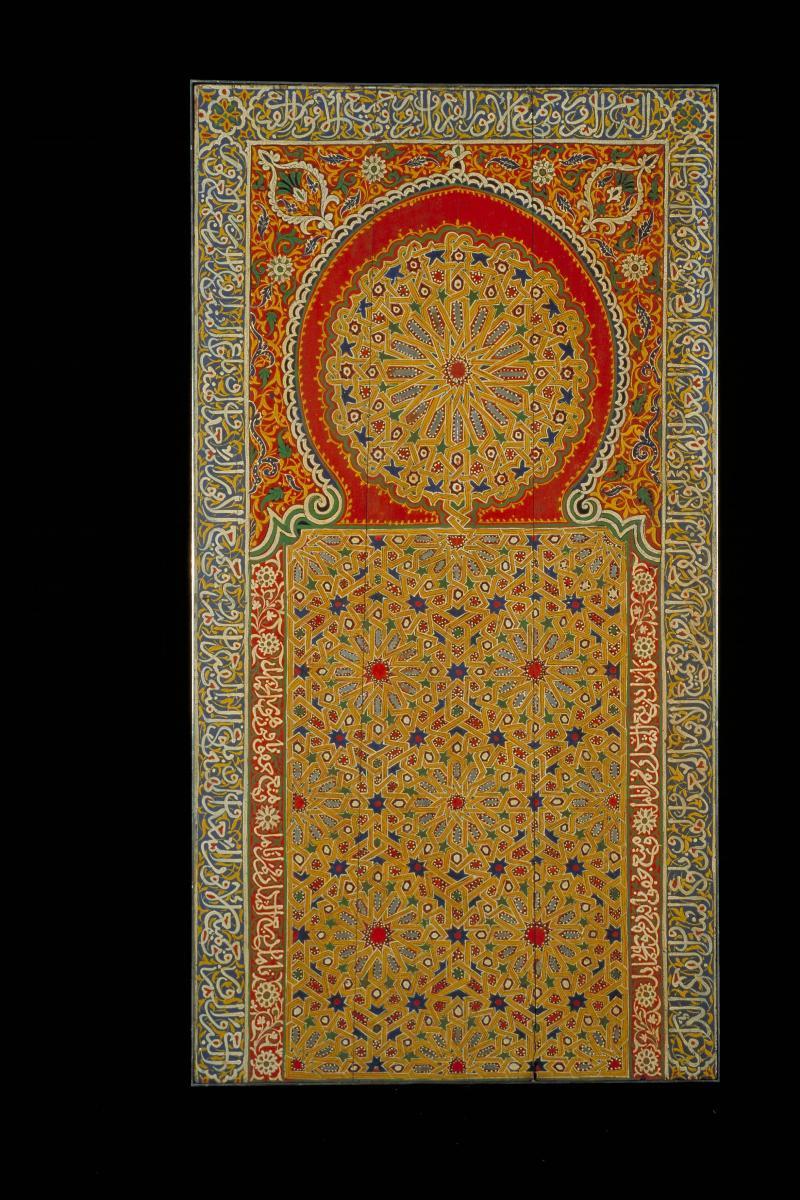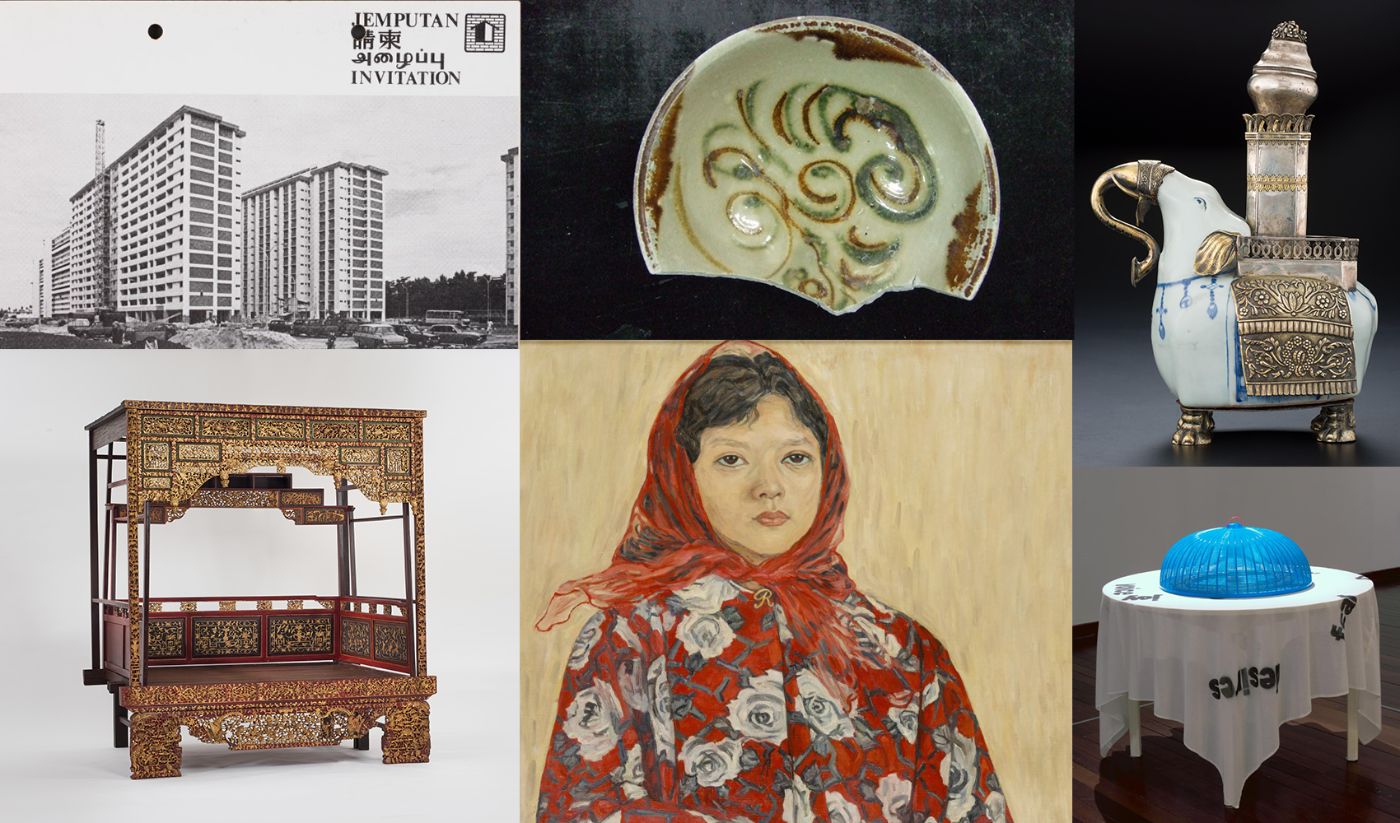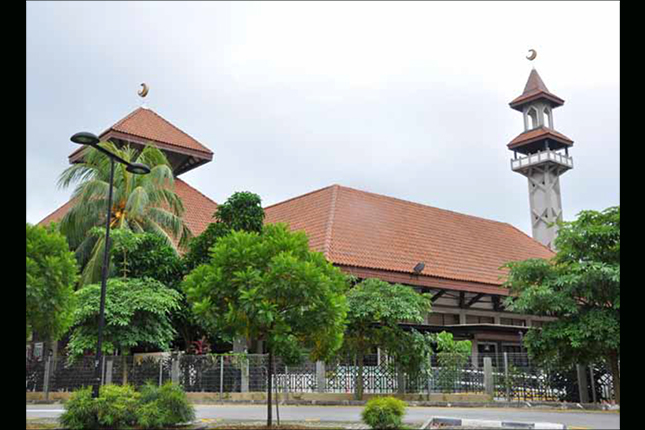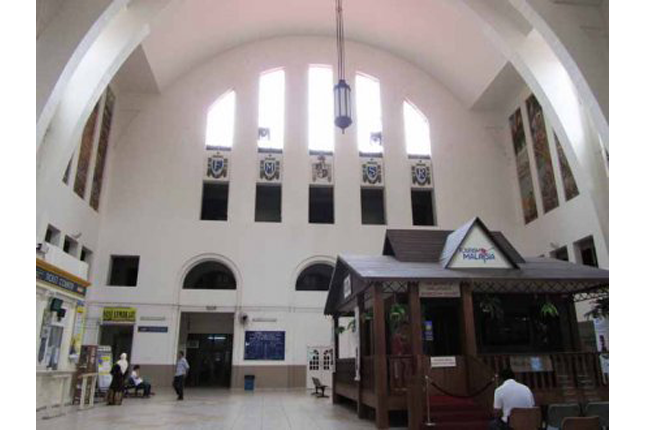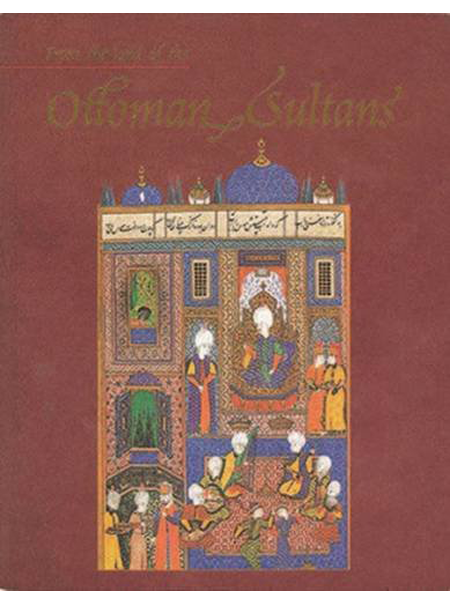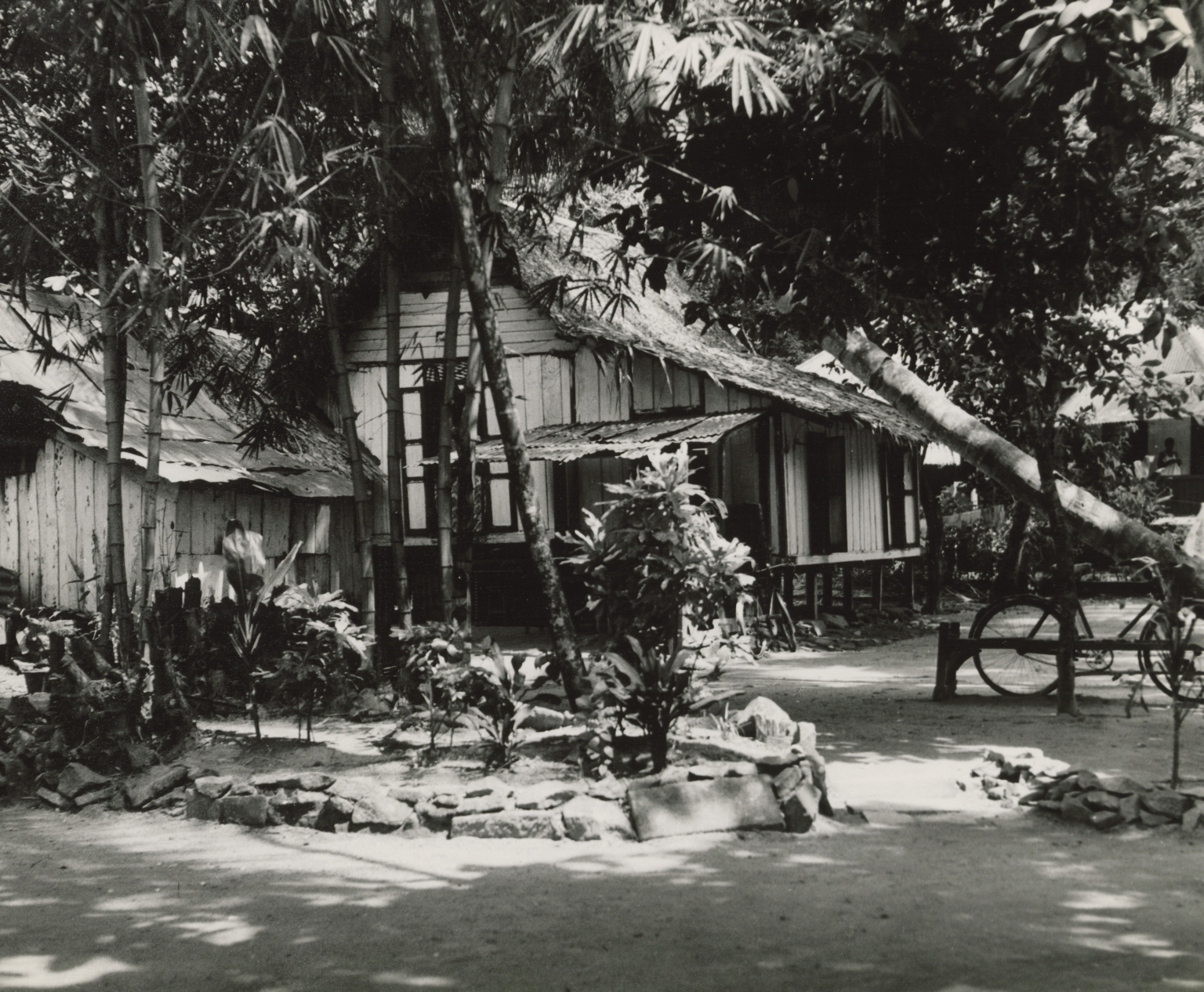This framed panel of three ceramic tiles is decorated with carnations, rosettes, pomegranates and tulips in faded pink, manganese, cobalt blue, yellow and green in relief. The foliage is continuous from one tile to the next. They were made in Iran during the Qajar dynasty (1785-1925). These tiles differ from typical Qajar tilework in its usually restrained use of colour. They are unusual because they have more in common with ceramics from Iznik, a town in Turkey which grew into a centre for the production of pottery with cobalt decoration towards the end of the 15th century.The decoration seems to be an interpretation of a decorative style called sukufe in Turkish, which came to predominate Iznik ceramics, and which involved the use of a color scheme based on the combination of red, blue, and a fine emerald green.Plants and flowers (such as tulips, roses, and irises), are used both as central and supporting designs in Qajar art, which by the 19th century often featured an increasingly flamboyant use of colour, including bright shades of pink, yellow and green. Most Qajar tiles are decorated with pastoral landscapes which often include buildings. An apparent nostalgia for Persia’s past is reflected in scenes drawing on traditional themes from Persian history and literature, images of Sassanian rulers, and depictions of important battles between Persia and the Ottoman Turks or Mughals. Although some Qajar potters signed their work, such as Isfahani and Muhammad Ibrahim, these are unsigned.




